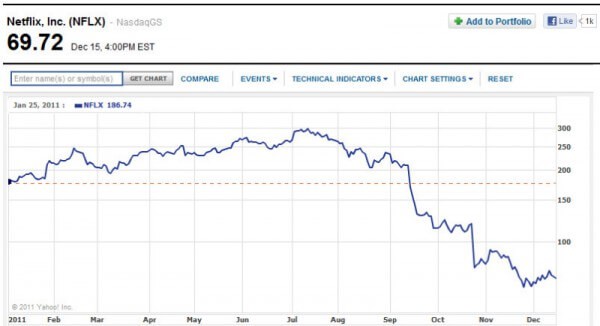How do you explain your company’s misstep to the public
So you messed up. Big. How do you explain your company’s misstep to the public?
Back in july 2011, Netflix raised its rates by 60 percent for customers who subscribe to its DVD and streaming video services.
Customers were outraged. Hundreds of thousands of people canceled their subscription, and Wall Street responded by punishing the company’s stock, which is down more than 60 percent.
Despite the outrage, Netflix CEO Reed Hastings declined to apologize to his customers for two months, arrogantly adopting a crisis communications approach toward his customers that can best be described as: “Deal with it.”
Two month later when Netflix CEO Reed Hastings hit “send” on his now infamous “I messed up” blog post and summarily announced the formation of the “Qwikster” business to run Netflix’s DVD network, a new chapter in botched crisis communications was written.
It is clear from the feedback over the past two months that many members felt we lacked respect and humility in the way we announced the separation of DVD and streaming, and the price changes. That was certainly not our intent, and I offer my sincere apology. I’ll try to explain how this happened (Netflix CEO Reed Hasting)
After almost 28.000 comments, significant customer backlash, and a startling drop in the company’s stock price, we can finally step back and discern several lessons from Hastings’ communications faux pas.
- It came two months too late – Why did Mr. Hastings allow customer resentment to simmer for months before stepping in and issuing an apology? By waiting, he allowed customer dissatisfaction to deepen and his company’s reputation to suffer additional damage. Plus, it makes it look like he apologized because he had to – not because he wanted to.
- He combined the “apology” with yet another unpopular change – By combining his apology with the announcement that his company was going to make the customer experience even less pleasant, he completely negated the value of the apology. He should have issued the apology weeks (or months) earlier as a stand-alone statement, which would have been viewed as a more sincere act.
- He didn’t give anything to customers – Mr. Hastings could have increased the value of his apology by offering customers something for their inconvenience – a free month, a free movie, something. Instead, he continues to appear more self-interested than customer-oriented.
- He never explained why netflix had to increase its fees – He alluded to additional streaming content, but didn’t explain how customers would benefit from the additional costs.
Overall, the communications were vague, bizarre, and left customers wondering: “Are you really apologizing to me, or are you doing this because someone else told you to?”
But how can you best go about making such an apology? 3 tips how to issue a company apology:
- Keep it simple – Get to the point and don’t deviate. Don’t include any veiled attempts to shirk responsibility or appease investors. You’ll just upset customers and muddle the message.
- Mean what you say, and say what you mean -If you’re truly sorry for your company’s actions, say so and leave it at that. Avoid clarifying phrases and long, self-lauding explanations.
- Reaffirm your company’s core values – Reaffirm what your company stands for and communicate how you intend to bring the company back to the values that guided it to success in the first place.
Update: Netflix Will Rebound Faster than You Think
Short URL & title:
3 key elements in issuing a company apology — http://www.torbenrick.eu/t/r/gax
Share it:
If you enjoyed this article, please take 5 seconds to share it on your social network. Thanks!









About The Author
Torben Rick
Experienced senior executive, both at a strategic and operational level, with strong track record in developing, driving and managing business improvement, development and change management. International experience from management positions in Denmark, Germany, Switzerland and United Kingdom